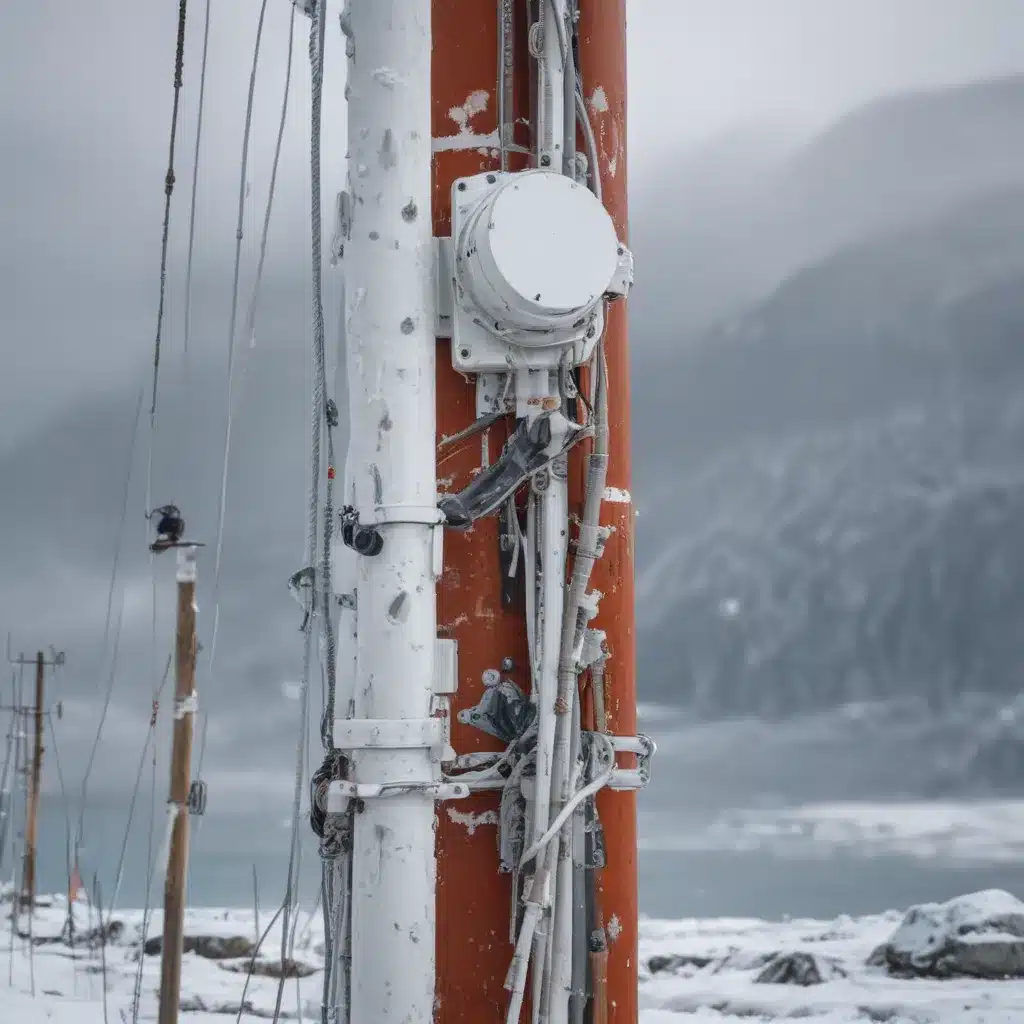Conquering the Frigid Frontier: IoT at the Ends of the Earth
As a lifelong tech enthusiast, I’ve always been fascinated by the ways in which cutting-edge innovations can push the boundaries of what’s possible. And when it comes to the Internet of Things (IoT), there are few environments more challenging – or more awe-inspiring – than the polar regions.
Imagine, if you will, a world-class research station nestled amidst the icy landscapes of Antarctica, or a remote weather monitoring outpost perched atop the frozen tundra of the Arctic Circle. These are the sorts of extreme environments where IoT technology is quite literally at the forefront of human exploration and discovery. [1]
Connecting the Poles with Cutting-Edge IoT
It’s no secret that the Earth’s polar regions are among the harshest and most inhospitable places on our planet. Whipping winds, sub-zero temperatures, and relentless blizzards are the norm, creating an environment that would bring even the most seasoned survivalist to their knees. And yet, it is in these unforgiving landscapes that we find some of the most important scientific research and monitoring initiatives taking place. [2]
From tracking the effects of climate change to studying the unique ecosystems that thrive in the polar regions, the need for robust, reliable, and adaptable IoT solutions has never been greater. Enter a new generation of ruggedized IoT devices and infrastructure, purpose-built to withstand the rigors of the frozen north and south.
These cutting-edge systems are engineered to operate flawlessly in the most extreme conditions, leveraging advanced materials, self-heating mechanisms, and innovative power sources to ensure uninterrupted data collection and transmission. [3] With the ability to monitor everything from weather patterns and air quality to seismic activity and wildlife populations, these IoT networks are quite literally the lifeblood of scientific research in the polar regions.
Surviving the Elements: Powering IoT in Extreme Environments
One of the key challenges in deploying IoT technology in the polar regions is finding reliable and sustainable power sources. Traditional battery-powered devices simply won’t cut it, as the extreme cold can quickly sap their reserves and leave researchers and scientists in the dark. [4]
That’s where innovative battery technologies and alternative energy sources come into play. Solar panels and wind turbines, for example, can provide a steady flow of renewable power to IoT devices, ensuring they remain active and online even in the depths of winter. And the latest advancements in battery chemistry have yielded specialized cells that can withstand the punishing conditions of the polar regions, maintaining their charge for months on end. [5, 6]
But it’s not just the power sources that need to be tough as nails – the devices themselves must be engineered to survive the onslaught of Mother Nature’s fury. Ruggedized housings, reinforced connectors, and self-heating mechanisms are just a few of the features that enable these IoT systems to thrive in environments where a single snowstorm could spell disaster for less hardy equipment. [1]
Connecting the Unconnected: Overcoming Connectivity Challenges
Of course, powering the IoT devices is only half the battle – they also need to be able to reliably transmit their precious data back to the research hubs and monitoring centers. And in the polar regions, where traditional cellular and Wi-Fi networks are few and far between, that presents its own unique set of challenges. [7]
Enter the world of wireless IoT connectivity solutions, designed specifically to bridge the gap between remote sensor nodes and the broader information network. These innovative systems leverage a variety of wireless protocols, from long-range radio signals to satellite uplinks, to ensure that even the most isolated IoT installations can stay connected. [8]
By seamlessly integrating these connectivity solutions into their IoT infrastructure, researchers and scientists working in the polar regions can rest assured that their critical data will reach its destination, no matter how far-flung their outposts may be. It’s a testament to the ingenuity of modern technology that we can now maintain a constant, real-time pulse on the pulse of the planet, even in its most extreme and inhospitable corners.
Embracing the Frozen Frontier: IoT’s Impact on Polar Research
As I reflect on the incredible advancements in IoT technology that are enabling us to better understand and protect the polar regions, I can’t help but feel a sense of awe and wonder. These are the frontiers of human exploration and discovery, where the very limits of our scientific and engineering capabilities are constantly being pushed to new heights.
From tracking the effects of climate change to monitoring the delicate balance of polar ecosystems, the data collected by IoT networks in the Arctic and Antarctic is invaluable. And as these technologies continue to evolve and become ever more resilient, I can only imagine the new frontiers of knowledge that will be unlocked in the years and decades to come.
So the next time you find yourself gazing up at the stars on a clear night, take a moment to reflect on the incredible work being done at the ends of the Earth. For it is there, in the land of ice and snow, that the future of our planet is being written – one sensor, one data point, one IoT-powered breakthrough at a time.













